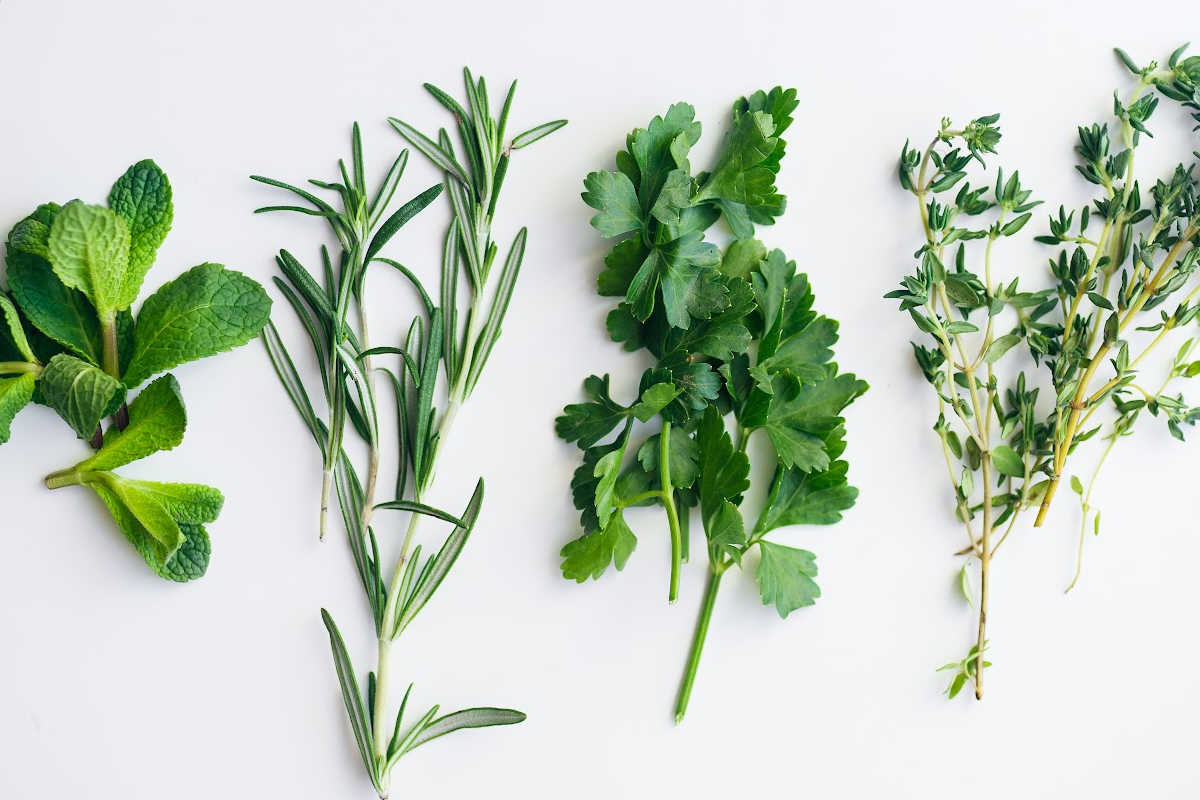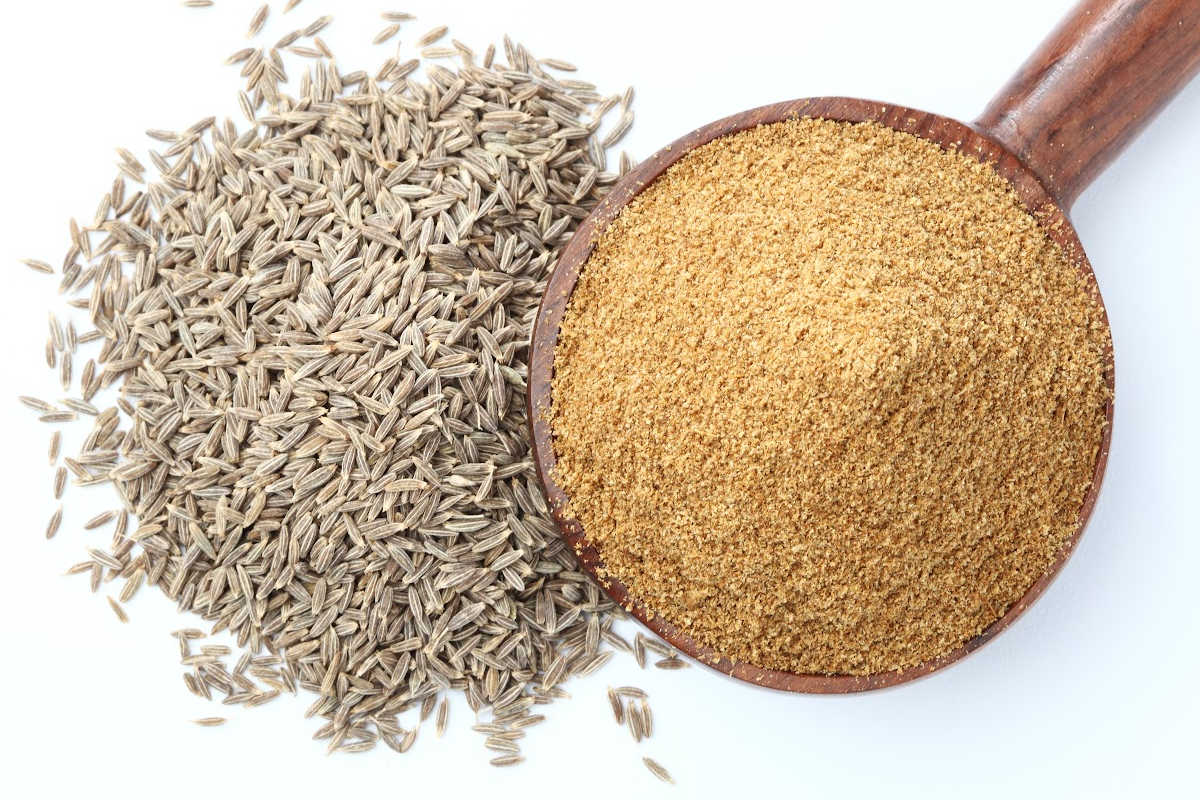Let’s say you don’t have easy access to cilantro, or you don’t like the taste of it. If you’re making a dish that calls for it, you’ll need a substitute with a similar flavor profile that you like and complements your dish. Here are the best cilantro substitutes.

Cilantro is a popular herb that’s commonly found in Mexican, Thai, Middle Eastern, Latin American and Indian cuisines. It’s often used to add an earthy, bright and zesty flavor to savory dishes, dips, dressings, and even curries.
🌿 What Is Cilantro?
It is an herb that belongs to the family Apiaceae, which includes parsley, cumin, dill, caraway, and celery. Its common names are coriander, Chinese parsley, and dhania.
Every part of this bright green color plant is edible. The leaves are frequently used for garnish, salads, and most dishes that don’t involve heat.
The seeds, on the other hand, are used to make coriander, which tastes remarkably different from fresh cilantro.
Being one of the main ingredients in Mexican cuisine, it is common in salsa and guacamole. You can also find cilantro in pesto sauces and rubs in Mediterranean and Middle Eastern dishes.
This particular herb has quite a polarizing flavor, with people either loving it ❤️ or despising it 🤢. For some people, cilantro tastes fresh, citrusy, leafy, and peppery. Others find it too herbaceous, soapy, or even metallic.
🔎 Overview
The following is a list of the recommended options.
- Parsley
- Basil
- Dill
- Herb mix
- Cumin
- Curry powder
- Caraway
- Garam Masala
🌮 Fresh Cilantro Substitutes
Fresh cilantro has a peppery, citrusy, and pungent flavor profile. Luckily for us, there are some herbs that have similar flavors and aromas.
The following fresh herb substitutes should be added after the cooking process because high heat can really impact the flavor and color.
Parsley

Flat leaf parsley is often confused with cilantro due to their similar appearance. Their flavors differ, though.
While cilantro has a citrusy flavor, parsley has a herbaceous and bitter flavor. Even so, it’s a great substitute because it adds a lot of freshness to a wide range of dishes.
In addition, all parsley varieties can work well as substitutes, including Italian parsley and curly-leaf parsley.
If using parsley has made your dish too bitter, you can balance the flavors by adding a dash of honey or sugar. You can also add a bit of lemon juice or lime peel to compensate for the lack of citrus flavor. Learn how to dry and use lemon peels.
Basil

Basil is an herb that has a strong citrus flavor and aroma. In comparison, basil has a sweet and subtle spicy flavor profile. It’s commonly used in Asian, Mediterranean, and Italian cuisine.
You can use basil as a stand-in if you want to add a spicy, licorice-like pop to your dish. It’s frequently used in Thai cooking as a substitute for cilantro. It’s also used as a garnish to give dishes a fresh, bright look.
The closest Basil type in flavor is Thai basil, which is less sweet and has more of a tangy, citrusy flavor than regular basil. You can use it instead of cilantro in curry and stir-fry.
Dill Weed

Dill is the most distinct substitute on our list, both in appearance and flavor. Its citrusy, grassy flavor profile can be used in place of cilantro in some dishes, particularly potato salads and dips.
Dill packs a potent flavor punch, so start with a small amount and add more as needed.
Herb Mix

If you’re looking for a substitute that tastes like cilantro, you can blend herbs with similar flavors, such as parsley, basil, and dill leaves. You can also mix in some tarragon and oregano to add a richer dimension to the dish.
These spices each have a distinct flavor profile that can be strong in their own right. However, when combined, they create a more well-rounded flavor that can complement almost any dish as a substitute for cilantro.
Cilantro Seeds and Dried Cilantro Substitutes

Coriander is a term often used to describe cilantro seeds and dried cilantro leaves. They taste floral, citrusy, and curry-like.
Coriander tastes and smells more nutty and earthy when roasted or toasted, losing most of its citrusy flavor.
Caraway

Caraway is the herb that most closely resembles coriander in flavor. It contains the same aromatic oils like coriander, so the flavor profiles are interchangeable. As a result, its seeds are frequently used as a substitute in recipes that call for dried cilantro.
It’s worth noting, however, that caraway seeds have a sweeter aftertaste. That’s why it’s best to start small and gradually increase the amount as needed. It’s also what makes caraway ideal for marinades with spicy elements.
In addition, caraway’s flavor is great for a number of desserts, baked goods, and casseroles.
Cumin

Cumin is a popular spice that often goes hand in hand with cilantro in Latin American and Middle Eastern dishes as well as Thai curries. Because it’s a common staple in spice racks, it makes for an ideal replacement.
You can use it in soups, stews, sauces, meat dishes, and vegetable dishes. You can even use it as a seasoning, as is done in Morocco, where the spice is kept on the table like salt and pepper to add flavor.
Compared to cilantro, cumin has a more fiery and bitter flavor. Still, it has a sweet and nutty flavor that’s similar to cilantro.
Be careful not to use too much of it, though, as its bold flavor can overpower other flavors in your dish.
Curry Powder

Curry powder is a spice blend made from dried herbs and spices such as coriander, ginger, turmeric, chili, and many others. It has a complex flavor that includes warm, sweet, savory, and earthy notes.
Other than curries, curry powder can be used as a substitute for coriander in soups and marinades, especially meat marinades.
Due to the powder’s strong flavor, you should only use half of what the recipe calls for and increase the amount only after you taste it.
What’s more, while almost all curry powders contain coriander, there are numerous types of curry that have different spices in varying ratios. Choose one with the appropriate spice blend for your dish.
Garam Masala
This flavor packed spice blend works fantastic in small doses as a coriander replacement as one of the main ingredients in the blend is coriander itself.
The blend pulls cloves, cinnamon, coriander, turmeric peppercorn, bayleaf, mace and cumin for a fantastic blend of spices to try when your dish allows you to change the flavor a bit.
Other Herb Mixtures Options
Vietnamese Coriander (Rau Ram) – This tropical plant, Persicaria odorata, is also called Rau Ram, Vietnamese cilantro, phak phai, hot mint, and Cambodian mint. These are used in many Asian dishes to enhance the flavors and have the most similar tasting of these additional options. This can be found at international grocery stores in the produce market as it is best eaten fresh when the leaves are young.
When substituting, use ¾ tbsp Vietnamese coriander to 1 tbsp of cilantro.
Celery Stalk Leaves – Celery leaves have a peppery taste rather than the lemony taste of the cilantro but the leaves help when making the substitution 1:1.
Tarragon – Mix a little bit of tarragon with basil or garlic as a substitute to use in a pinch. Although it will not be an exact match, it will work if that is what you have in the house.
Chives – This doesn’t taste like cilantro, but in a bind, you can use these bright green leaves as a last minute stand in for times you just want to get the recipe done without running to the store. It has a slight onion flavor and can be mixed with some lemon or lime to the recipes.
Papalo – This hard to find herb from South America and Mexica will give you the best cilantro substitute when trying to get the most exact flavor profile. If you can find this herb, only use the leaves as the stems and only use ½ serving to 1 serving of cilantro.
Recipes With Cilantro
Cilantro Lime Rice – This simple recipe serves as a side dish that you can elevate with most, if not all, cilantro substitutes. You can even season it with caraway or cumin.
Fresh Salsa – This recipe uses equal ratios of cilantro and other fresh ingredients. You can use parsley, basil, or dill instead, but there’s room to explore with other kinds of herbs.
Cilantro Pea Dip – This is an alternative guacamole recipe packed with fresh cilantro, which you can easily substitute with dill or parsley.
Falafel – This is a flavorsome Middle Eastern recipe that relies heavily on cilantro, but a combination of fresh parsley and dill can replace the herb. It’ll also add a new distinct flavor to the dish.
Grilled Cilantro Lime Steak Skewers – Layers and layers of cilantro, lime and garlic all combined to marinade steak skewers prior to grilling up for your next cookout.
FAQs
Yes and no. In the United States, cilantro, which is Spanish for coriander, refers to the leaves and stems of the coriander plant, Coriandrum sativum.
The seeds are called coriander, and to add to the confusion, cilantro leaves are often referred to as Chinese parsley.
In Europe, on the other hand, coriander refers to the leaves, stems, and seeds.
Some of this distaste for cilantro could be due to personal preference, but for those who find the plant to taste like soap, the problem is probably genetic.
Cilantro contains aldehyde chemicals, which are also found in soap. These chemicals are responsible for giving this polarizing herb its soapy smell and taste.
That said, not everyone has the olfactory ability to detect those chemicals. In fact, there’s one specific gene that has to be present for you to pick up the scent and taste of cilantro’s aldehydes.
Several studies have found that you must have the genetic variant OR6A2 to taste and smell soap when eating cilantro.
These aren’t the only ingredient replacements you can make in your kitchen.
- Five Spice Substitute
- Garlic Powder Substitute
- Parsley Substitute
- Green Chilis Substitute
- Italian Seasoning Substitute
- Mustard Seed Substitute
- Cojita Cheese Substitute
Final Thoughts
Many people have an aversion to cilantro. Some may even have an allergy, but even if you simply don’t have access to the herb, you can find several viable options to use instead.
If a recipe calls for fresh, basil and parsley are your best option for a tangy, grassy, and fresh flavor.
Cumin and caraway are good substitutes for dried cilantro or ground coriander in recipes because they add a similar flavor to a variety of dishes.
If you’re in a pinch, you can add a bit of curry powder, which almost always contains ground cilantro.
Just remember to adjust the amount of substitute to the recipe so that the substitute’s flavors don’t overpower the other ingredients.
Related Substitutions
Hi!
Ginny Collins is a passionate foodie and recipe creator of Savor and Savvy and Kitchenlaughter. Indoors she focuses on easy, quick recipes for busy families and kitchen basics. Outdoors, she focuses on backyard grilling and smoking to bring family and friends together. She is a lifelong learner who is always taking cooking classes on her travels overseas and stateside. Her work has been featured on MSN, Parade, Fox News, Yahoo, Cosmopolitan, Elle, and many local news outlets. She lives in Florida where you will find her outside on the water in her kayak, riding her bike on trails, and planning her next overseas adventure.









Leave a Reply